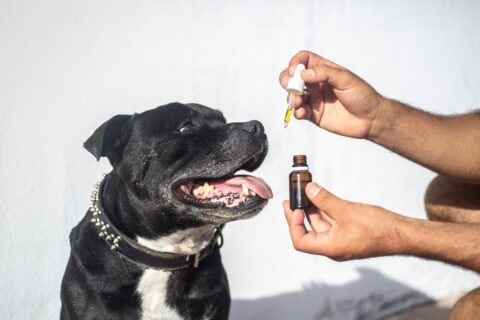We Australians love our cats. Our country is home to no less than 10 million pet cats, with approximately 33% of households owning at least one. On top of that, over their lifetime, Australians spend around $17,000 in costs associated with the cat-ownership process, around 50% of this sum going towards foods, treat or nutrition-related products. But for many, this financial commitment is worth it, as cats, as independent as they are, act in many ways as the perfect type of pet for the living situation of most Aussies.
Do you live in a small apartment, and you don’t have the free time to properly walk your pet or socialise it with other animals? Then, cats are probably the best pet choice you realistically have at your disposal. Independent, loyal, and in many ways not yet fully domesticated, cats are better suited to indoor living than the majority of dog breeds, and they are also surprisingly clean animals that spend around 50% of their waking hours grooming themselves and making sure they can reduce their scent.
This ingrained obsession with cleanliness allows cats to adapt easily to our way of living. However, their instincts can also come with bundled difficulties for us, as pet owners. In order to cover their scent, kitties have a natural tendency to bury their waste. You don’t have a litter box in your apartment? In that case, your cat will get stressed, and could engage in destructive behaviours that will strain your relationship with her. Investing in a litter box and high-quality cat litter crystals should be one of your priorities. And luckily, the Aussie pet shop industry is jam-packed with products suitable for your fluffball’s requirements.
Why Is It Necessary to Invest in Kitty Litter?
It’s quite simple. In the wild, cats act as both predators for small critters and prey for larger Apex animals that can easily track their scent. Yes, sometimes cats do use pheromones, like the one excreted from their paws, in order to communicate with rivals and mark their territory. But for the most part, they are trying to keep predators at a distance and also hide their presence when hunting for their traditional prey. For cats, burying their waste is a natural instinct that helps them cover their exact location, and also reduces the risk of spreading diseases that might affect the health of their young.

Cats are clean animals, and if given the opportunity, they try to keep their territory as tidy as possible. Have you noticed that your kitty is not bothering to cover its waste anymore? That’s something to keep an eye on, as behaviour like this could signal either stress or health issues that should be checked by a specialist. In a way, it’s a blessing in disguise. While dogs need daily walks in order to avoid accidents inside the home, cats typically learn how to use a litter box in just a couple of weeks, regardless of owner’s input.
Of course, technically, any type of sand will do, as your kitty is probably not the fussy type when it comes to these sorts of things. That said, quality kitty litter does have its benefits, especially when it comes to clumping and odour control. Are you looking for a type of litter that will be both relatively cost-friendly and also present some distinct benefits over conventional clay litter? In that case, premium-quality cat litter crystals are an option worth exploring.
What’s Different About Cat Litter Crystals?
In short? The composition. While conventional kitty litter is often made from bentonite or kaolinite, litter crystals are made of sodium silicate, which gives them better absorbency compared to conventional litter solutions and also eliminates the problems with litter dust. Silica gel can absorb around 40ml of liquid for each mg of weight. Why does this matter? Well, conventional clay-based litter is great at clumping, but it doesn’t have the same absorbency properties as silica gel. And where there is moisture, there is 1) smell and 2) bacterial growth that, in some cases, can be detrimental to your kitty’s health.

Cat litter crystals weigh less than conventional clay-based kitty litter, last longer before they need changing, and are less likely to stick to your cat’s fur, which is a known issue with other types of litter, especially those that use natural biodegradable materials like small paper pellets. That said, litter crystals also have their drawbacks. For one thing, they don’t clump, which is a deal breaker for some owners and they’re also more expensive than conventional clay-based litter. Plus, the texture of litter crystals is unusual for some cats, who might avoid them.
What Kitty Litter Alternatives Are There?
Cat litter crystals are a fantastic choice in the right circumstances, and if your kitty likes their texture and uses its litter box, then silica gel crystals are perhaps the best choice currently available on the Australian market. It’s not the only one, though. Are you looking for something a bit cheaper, that will also be widely available even in the shabbiest-looking pet stores? In that case, you could choose clay-based litter, preferably of the clumping kind. Sure, it can produce dust, it’s a bit heavy, and in some cases the clay can stick to your kitty’s paws. But it’s also cheap, it’s effective at neutralising odours and its texture is preferred by most cats.
Are you looking for something else? Perhaps kitty litter that’s more biodegradable? In that case, you could look for litter made from soybean fibre, which can be an option for cats who are sensitive to the dust particles produced by conventional clay-based litter. Soybean fibre litter is an eco-friendly alternative to more conventional litter choices. That said, it is more expensive than clay-based options, and it’s also not that widely available. Are you thinking of going the old school way? Then, paper pellet litter is always a choice to keep in mind. It’s not exactly the best clumping material, nor is it great for odour control. But it’s cheap and it’s as eco-friendly as it gets.
Disclaimer:
This article is for general information only. It is not professional advice. If you have questions about your cat’s health or behaviour, please talk to a vet. We try to share correct information, but we can’t promise everything is always up to date or right for your situation. Any products mentioned are just examples — we are not paid or linked to any brands.

Dorothy I. Johnson is the heart and soul of Flash Flyer Blog’s writing team. Dorothy loves storytelling and finds the extraordinary in everyday life. She has a unique voice for sharing travel stories, tech trends, wellness tips, and food finds. Her relatable style makes complex ideas easy to grasp. She also turns simple moments into captivating stories. Dorothy’s background and curiosity inspire her to make content that connects with readers. They can find either practical tips or new viewpoints in her work. When she’s not writing, she likes to explore new places. She experiments in the kitchen or dives into a new personal growth book.




